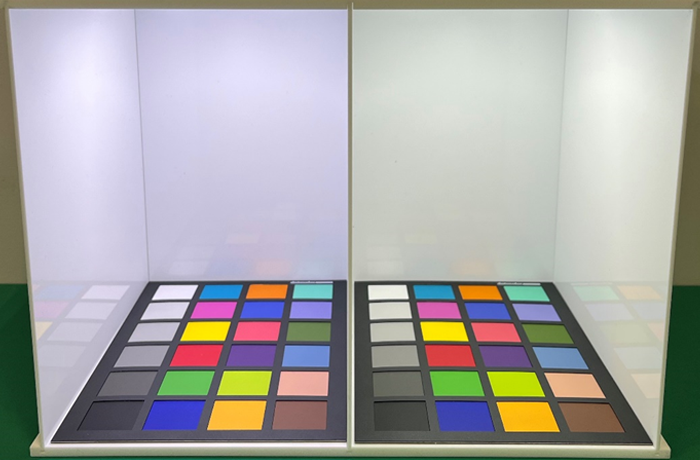 History of Light Sources - Color Rendering Index (CRI)
History of Light Sources - Color Rendering Index (CRI)
10 April 2024
The Pursuit for Quality of Light - Beyond CRI
Since January 2024, Nichia has introduced three blog posts on “History of Light Sources - Color Rendering Index (CRI)” and this blog will conclude its series with this fourth post. In the world of lighting sources, where there is often a tendency to prioritize luminous flux and efficiency, Nichia has strived to convey that CRI is just as important as luminous flux and luminous efficiency. Nichia, which has been involved with “light” for more than half a century since the fluorescent lamp era, hopes that this part of its philosophy has been understood by readers.
Over the last three posts, Nichia has focused on “CRI”, however, what Nichia is striving for, as mentioned at the end of the previous post, is “to enrich people’s lives through light.” To achieve this, Nichia is dedicated to pursuing “quality of light.” In this pursuit, CRI is certainly very important. In addition to that, CCT and spectrum also have a significant impact. In this final post, Nichia will introduce the Clear White color LED, developed for senior citizens who make up about 30% of the population, as an example of its latest initiative in the pursuit of “quality of light.”
With age, people gradually begin to perceive things as becoming more yellowish. This is caused by the yellowing of the crystalline lens of the human eye that occurs with age, and it is also the reason why it becomes hard to read newspapers, magazines, and books. On the other hand, as medical advancements extend the average life expectancy, the time spent living with such inconveniences associated with aging is becoming increasingly longer. Additionally, as people grow older, the time spent being active outdoors decreases while the time spent indoors increases, making this issue increasingly difficult to ignore. The Clear White color LED was developed as a lighting solution designed to support making that time more comfortable.
The Clear White color LED compensates for the difficulty in perceiving colors due to the yellowing of the lens, providing a clear and accurate color. Technically, it is a light that reduces the yellow emission component from the standard white light. If such spectral adjustment were to be performed using conventional technology, the luminous flux would decrease by more than 20%, making objects harder to see. Clear White color LED is incorporated in Nichia’s H6 Series technology, which was introduced in the first blog post, increasing the CCT range from 6500K to 7800K and improving the CRI from Ra80 to Ra90, while limiting the reduction in luminous flux to about 5%. In fact, despite the luminous flux being 5% lower, almost all senior citizens report that the Clear White color LED with its pronounced whiteness, better contrast, and higher color rendering, feels significantly brighter than standard white light. Nichia aims to ensure that senior citizens who spend much of their time indoors can perceive the world around them as brighter, feel greater joy when eating since the food looks more colorful, and experience intellectual joy from the ease of reading newspapers, magazines, and books. The Clear White color LED is a breakthrough that achieves a new aspect of light previously unavailable, designed to support a comfortable and vibrant lifestyle for senior citizens.
The Clear White color LED is just one example. In the world of light sources, while luminous flux is indeed an important factor for evaluating light, Nichia believes that the quality of light is not determined solely by luminous flux. Factors such as CRI, CCT, and spectrum must align with the intended purpose to truly constitute high-quality light. With this philosophy, Nichia is committed to the daily development of new lighting solutions.
As a leading LED manufacturer, Nichia continues to strive to enrich people’s lives through “light.”

Clear White color LED (7800K/Ra90) (left) and Standard white LED (6500K/Ra80) (right)
For more information about the products, refer to Nichia’s website.
Clear White color LED
